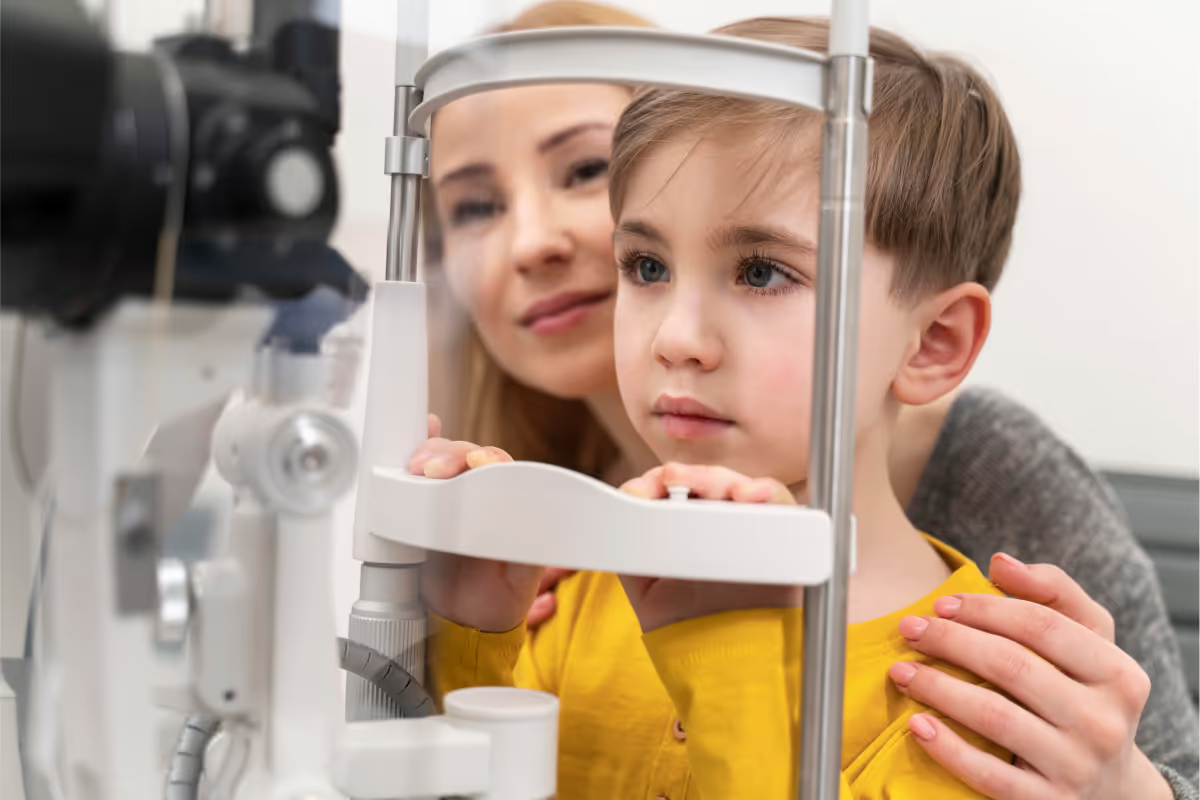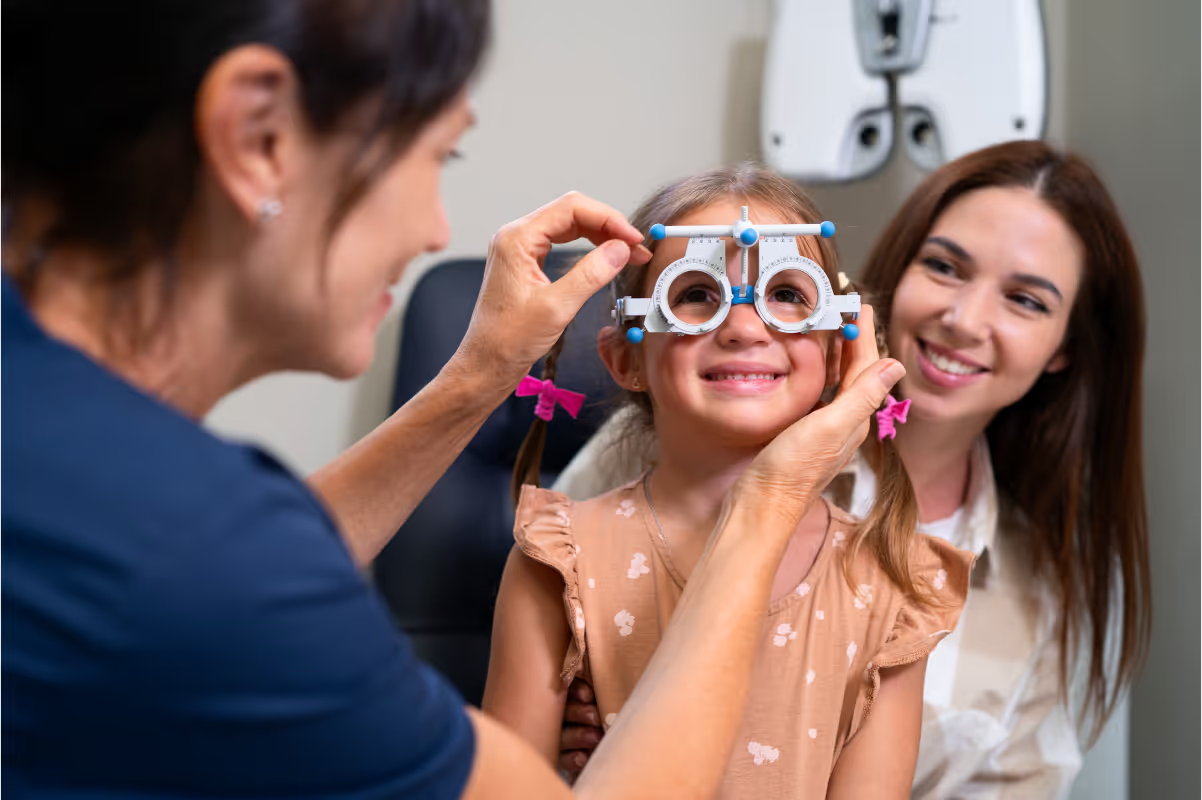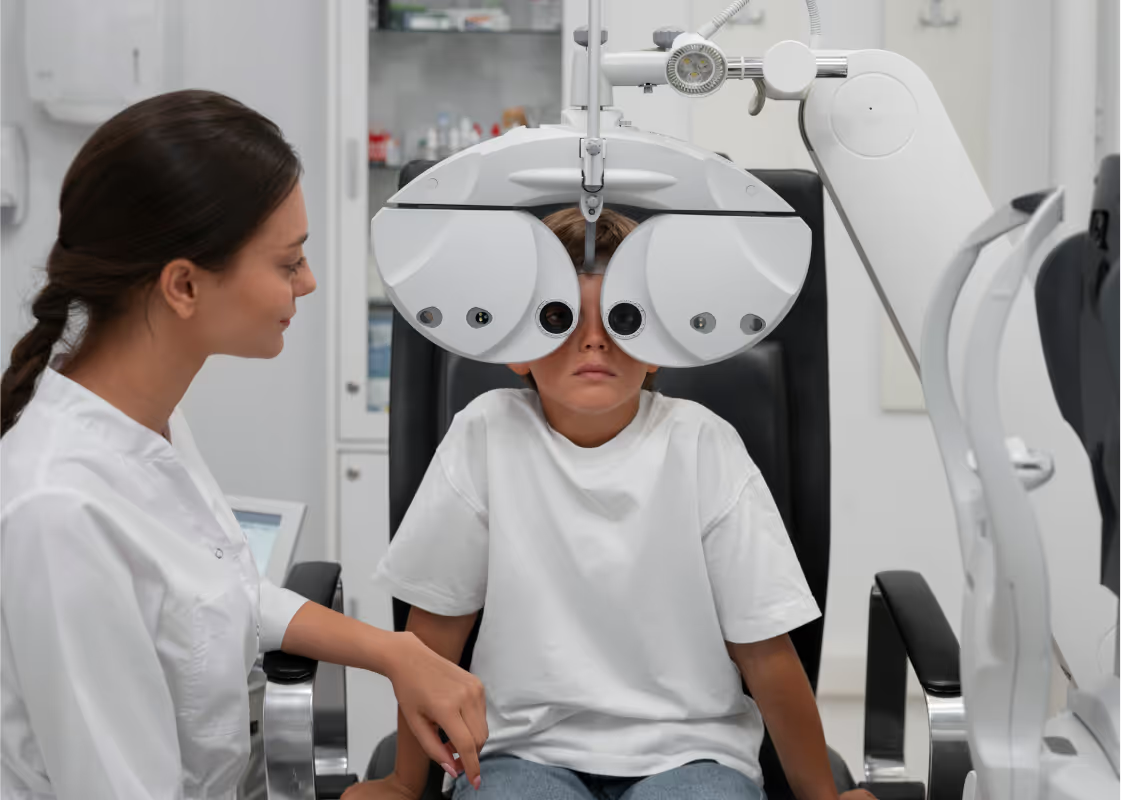
Expert Children’s Eyecare
Free NHS Eye Examinations for Children
Children are entitled to free NHS eye tests up to age 16 (or 19 if in full-time education). If glasses are needed, they also receive free lenses, ensuring clear vision without added costs.


Early Eye Care for Lifelong Vision Health
We recommend a first full eye examination at age three, with annual check-ups thereafter. Early detection of issues like lazy eye or squints helps prevent long-term vision problems.
Fun & Child-Friendly Eye Tests
Our exams are designed to be engaging and stress-free for children. We use picture-based vision charts for younger kids, making the experience enjoyable and accessible for all ages.

Give Your Child the Best Start for Healthy Vision! Book a fun and stress-free eye examination today!
Testimonials
An excellent and well-run establishment. Briefly. In the run-up to Christmas I laboured under inflamed and irritated eyes. An initial examination revealed many tiny abrasions. It seemed simple. But the proprietress was suspicious and conducted further tests, also enquiring into apparently unrelated symptoms. She correctly identified a particular eye disease, and wrote out an effective prescription. A thoroughgoing professional, likeable, hugely competent and all-round mistress of her trade.
Ross Atabey
Fantastic service received today and probably one of the friendliest businesses I have ever been into. The checkup was thorough, the staff friendly and I even had my kids looked after whilst I had my appointment. I wholeheartedly can't recommend them enough. And for anybody worried about Coronavirus, the premises was spotless, the staff all in PPE and hand sanitizer available as you walk through the door, so I think they've aced that one too.
Mark Powell
Thanks so much. The amazing opticians timely and diligent referral to the hospital ensured a super fast response and treatment for what could have been a painful issue. Many thanks to Amanda.
CMD
It is a pleasure to go to this Opticians; the staff are extremely friendly and courteous, the appointment times are adhered to, Joanne is extremely thorough, works with modern up-to-date equipment in a caring professional manner. Highly recommended.


© {{Year}} POPLE & BROAD LIMITED. All Rights Reserved. Company number: 6155629.

